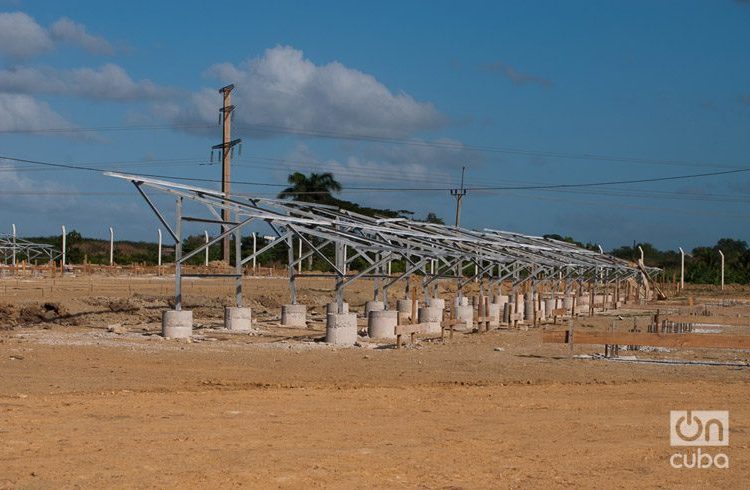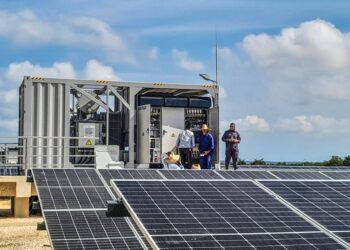President Raúl Castro said so himself on December 2015, and later during the second session of the National Assembly in June 2016: that the year that has just closed would be the worst of the last five years in terms of economic growth. Finally, and before the deputies, Minister of Economy and Planning Ricardo Cabrisas announced the 0.09 percent decline in the country’s Gross Domestic Product.
Despite the fact that a part of the conditions and characteristics of the national economy that caused that decrease have not substantially changed, the Cuban government has set itself the goal of growing 2 percent in 2017.
Compared to other forecasts, like that of the Economic Commission for Latin America and the Caribbean (ECLAC), that expectation is much more optimistic.
Not much can be said about 2016. Firstly, the effort to avoid cuts in the programs that benefit the entire population in a context of material and financial restrictions was important. Secondly, in the midst of those same conditions notable amounts of resources were used for the recovery of Guantánamo province after the passage of Hurricane Matthew.
But one would also have to think that the opportunities were not efficiently used and the integration into a single force designed for development, economic growth and wellbeing of all the economic agents was not achieved.
On the one hand, the socialist state business system did not achieve the necessary dynamism and the transformations initiated have not sufficiently developed to have better results. On the other, the effort by the State are partly diluted in destinations that are not the fundamental means of production, understood according to the Conceptualization of the Economic and Social Model like those that play a “strategic role in economic and social development, the country’s vitality, sustainability and national security.”[1]
Processes like Foreign Direct Investment (FDI), the expansion of cooperatives, the creation and legal recognition of small and medium enterprises, entail a dose of risk; but taking risks is a necessary condition for success. We must incorporate risk into our DNA or, better said, we must take advantage of the risk we have already incorporated into it and be able to target it toward the country’s improvement. The idea that taking risks is forbidden must not continue prospering.
Uncertainty continues being a distinctive characteristic of world economic growth. Important markets for Cuba don’t seem to have gotten rid of the tensions they went through in 2016. The island’s two principal trade partners had a very difficult year. China experienced in 2016 the worst economic performance in 25 years and a slower growth is forecast for 2017. Meanwhile, Latin America experienced again a contraction of its economy and important countries for Cuba closed 2016 in the red.
The decreased dynamism of the region’s economies in 2016 is fundamentally due to the lower growth presented by the majority of the South American economies and the contraction of some of them, like Argentina (-2.0%), Brazil (-3.6%), Ecuador (-2.0%) and Venezuela (Bolivarian Republic of) (-9.7%). The economy in South America as a subregion went through a contraction of 1.7% in 2015 and 2.4% in 2016.
Source: ECLAC. Preliminary Overview of the Latin American and Caribbean Economies.
For 2017 the international economic panorama doesn’t seem to augur very positive changes, although everything indicates better perspectives.
A 2.7 percent growth is expected for the world economy and a world trade growth rate of between 1.8 and 3 percent, together with an 8 percent improvement in the prices for basic products. However, it will continue being a growth with high uncertainty, also marked by the first year of a president in the United States who is difficult to predict.
Although with probable improvements, this is not an easy world for a small country with its own difficulties characteristic of an underdevelopment that has not been overcome, and with a regimen of economic relations persecuted by the world’s leading capitalist power. It is an archipelago dependent on energy and food according to the evolution of world prices. But it’s the world we have, we can’t move, so we must know how to find the way to live here and get something out of it, even out of such a difficult situation.
The 2017 plan has set for itself a high goal: to grow 2 percent in conditions of financial restrictions, with trade partners losing resources, markets still depressed for some of our principal products, with the ineludible duty of honoring the commitments of the renegotiated debt and favorably resolving the non-payment to suppliers, with a reform in the state business sector (responsible for at least 80 percent of the GDP and 70 percent of employment) which has still not given the expected results and, as if this were not enough, with the syndrome of paralysis because of the analysis of the negotiations with Foreign Investment,
It will also have to deal with the prejudices accumulated for decades against the non-state sector, which is the same plan that has mainly made responsible for 13 percent growth in the retail mercantile circulation.
Reaching the 2 percent goal will be even more difficult if we still haven’t been able to resolve the monetary distortion and our internal prices absolutely do not reflect the real spending of work. This is what happens when there is a distorted official exchange rate and a high percentage of internal prices are defined administratively. Moreover, the goal will have to be reached within the limits imposed by the culture of the monopolistic management of the economy, which prevents the positive role of competition in the search for more efficiency and in the promotion of innovation.
It’s not necessary to go to China to learn how competition in quality functions as a driving force for innovation; you just have to look at our incipient non-state sector, especially restaurants and rooms for rent for tourism.
These are other structural tasks – some of them in the long term – with a foreseeable strong impact on our economy, with high costs in the short term difficult to be assimilated when our economy is barely growing and when we are unable to have access to sources of financing that allow us to cushion those effects. It is a great challenge which we must start assuming starting now.
The goals proposed by this plan are clearly expressed, however not only does it matter what we must do but also how and at what pace we do it.
Let’s give some examples of sectors in which measures can be taken to reach the wished-for 2% growth.
In his December 27 speech the president spoke of the great need to speed up everything related to the production of energy with renewable sources. Well, almost three months after its approval, the first project with foreign direct investment in this sector still hasn’t generated a single kilowatt.
While our country suffers from a deficit of chronic production and supply, “many persons’ vocation for production and services” remains frustrated by the stalemate in the approval of industrial and services cooperatives (defining them negatively as “non-agricultural” is not a favorable form).
These cooperatives are still considered an experiment, they are still limited to the same tasks as the trades approved for self-employment and the integration of professionals to offer better products and services continues being marginalized and forbidden.
It also happens in the areas of renewable energy. The packages of cooperatives to be approved include cooperative enterprises to contribute to that aim, capable of producing at minimum cost solar water heaters, biodigesters, small systems for the production of wind power, all of them produced by Cuban engineers and technicians formed in our universities, who have decided to live in Cuba and work in Cuba. Why have they not been allowed to undertake that option? What are we afraid of? That they compete with the state enterprises? Which is preferable? To save thousands of tons of fossil fuel, having a more sustainable country in terms of the environment thanks to the “non-state” but Cuban effort, or to continue spending the little money we have in contaminating with oil our country in the name of state management?
If the strategic cores that must be the long-term plan’s foundation are defined, why not act according to them?
The other example is also well-known: foreign direct investment (FDI) in general. The minister of economy has just affirmed that “the participation of foreign investment continues being very low with respect to the total investment, representing only 6.5 percent of the plan.” This means that the amount of FDI, if we consider that the investment carried out in 2015 was 5.906,6 billion [2] and supposing that in 2016 we reached the 7 billion, in 2017 it will barely reach some 455 million dollars, a figure very far away from the 2.5 billion we need.
Why have the other 2.045 billion dollars not been achieved? That figure is equal to almost losing all our income from the export from several sectors. Who pays for that deficit? Why continue allowing the negotiating-approving chain to make the country lose so many necessary resources? What must we do for this to not continue happening? What must we change?
For the time being I will allow myself a single idea: we continue concentrating the approval of decisions on the sectorial agencies, and leave out of that legal authority the provincial governments, which are not allowed to approve even small projects that can generate significant economic and social benefits according to their level.
Cuba continues being in fashion, we who attended the 2016 Havana International Trade Fair were able to confirm this. However, our 15 minutes of fame could be coming to an end. We have to take advantage while this tremendous opportunity lasts.
2017 will be a difficult year, but I still think that we have everything it takes to make it a victorious year in a convulsed world. It only depends on us.
[1] Conceptualization of the Cuban Economic and Social Model. No. 125.
[2] 2015 Cuban Statistical Yearbook, ONEI, 2016.










